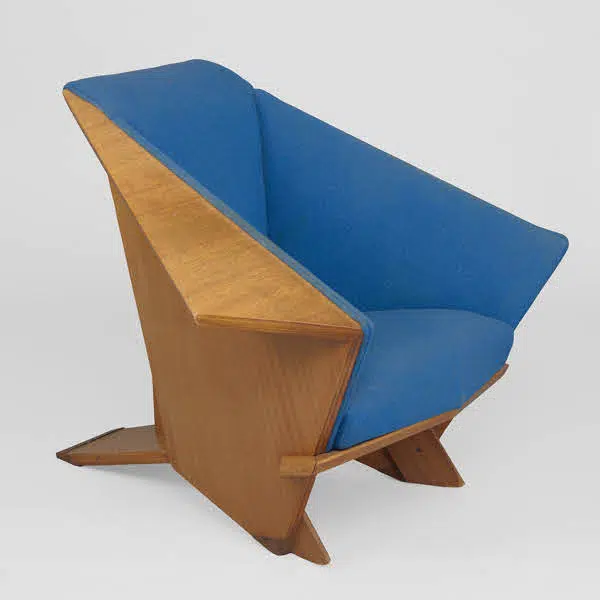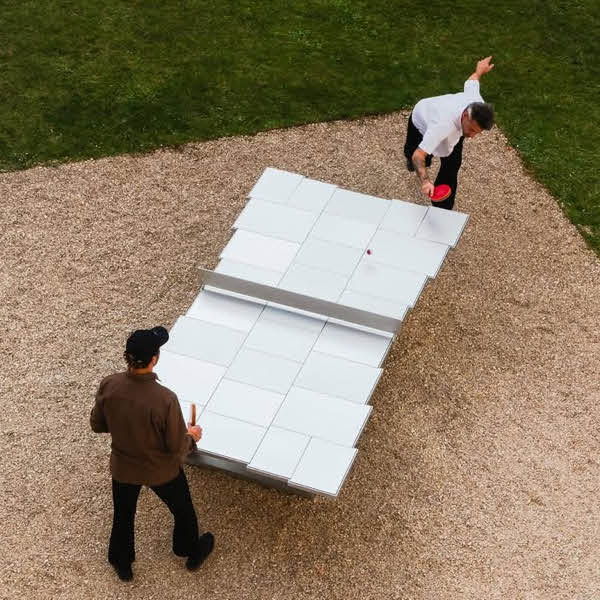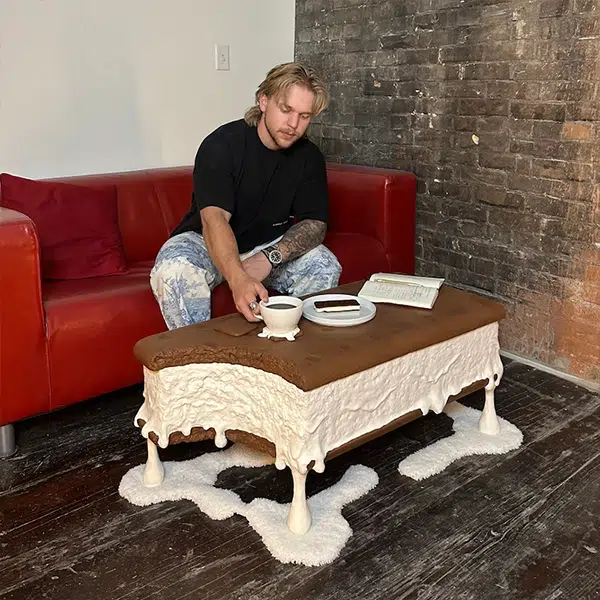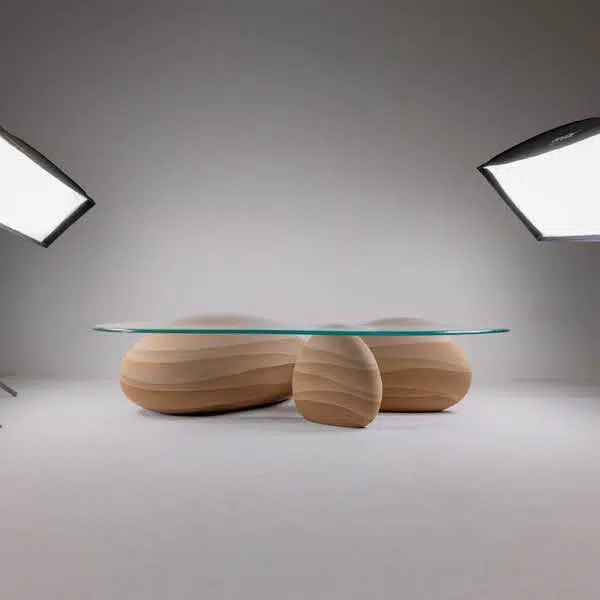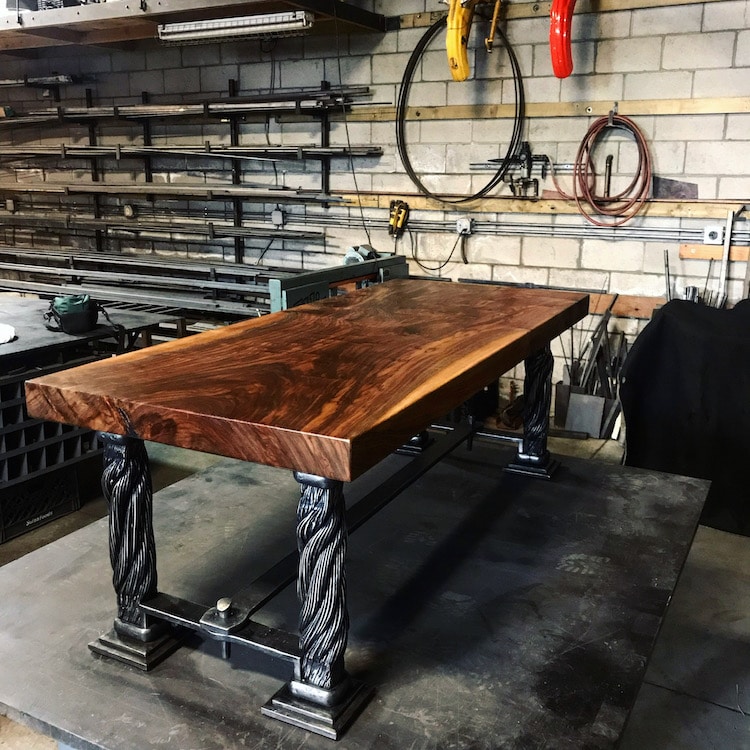
California-based company Strands of History helps to preserve the legacy of San Francisco's iconic architecture by using original suspender wire ropes from the Golden Gate Bridge in commemorative projects. The company most recently collaborated with local artisans to craft an incredible table, using these vertical suspender ropes as both decorative and functional elements.
The vertical suspender ropes—which have a core bundle surrounded by six other bundles and are twisted into a helix form—are topped with Claro-walnut, ultimately complementing the elegant design and craftsmanship of the legs' metalwork. Each rope has 229 individual strands of galvanized steel wire, taken from the bridge during the 1970s when they were removed and replaced.
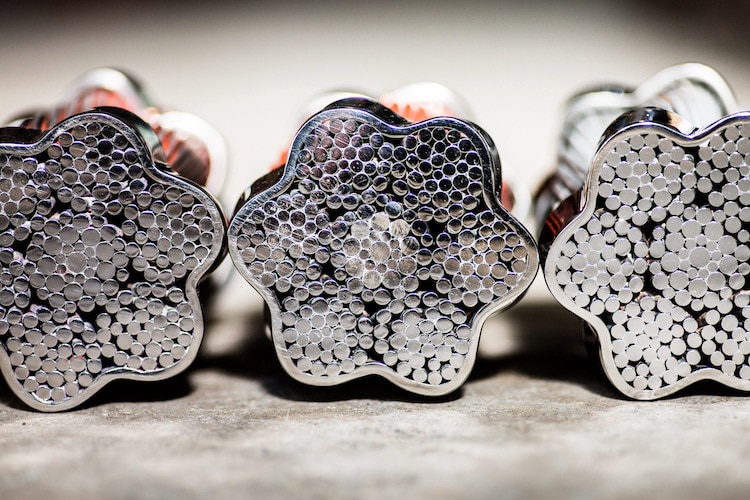
Since opening in 1937, the Golden Gate Bridge has been a symbol of American engineering. The suspension bridge runs about 1.7 miles and is set in place by two main cables with wire ropes running vertically. Over the years, scraps were sold off and in 2006, Strands of History bought the remaining inventory of these precious materials. The company sells pieces of the cables as mementos, but is now looking at functional designs that can feature the beauty of the ropes. Transforming suspender ropes into weight bearing table legs was no easy feat, and the company worked with Bushey Ironworks to create steel bases that compress and stabilize the cables while highlighting their helix form.
The use of walnut was also a deliberate choice. “Andy Cline of Roundwood Furniture suggested using Claro-walnut for the top for its inherent beauty as the grain flows like the wire ropes,” shares Bob and Mary Zimmerman, owners of Strands of History. “The fact that the ropes and the walnut are about the same age (over 80 years old) just adds to the appeal of the table.”
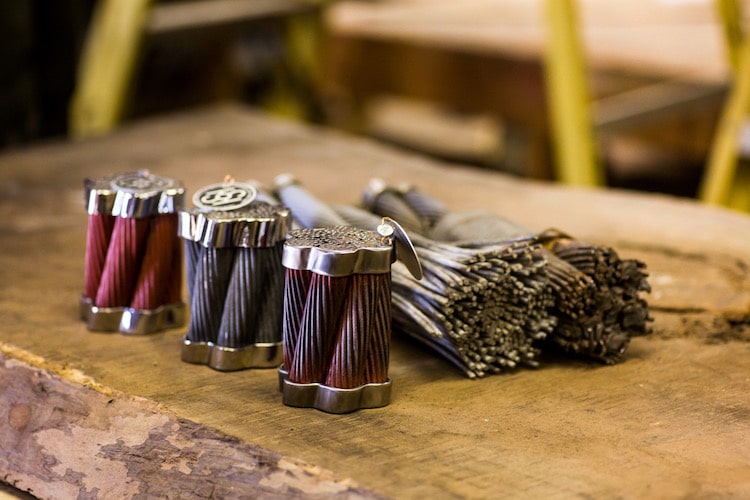
Due to the strength of the ropes, working them into a design is no easy feat. The strands have a high carbon content that makes them difficult to cut, but that's not the only issue. “Each wire and bundle has torsional energy that makes them want to unwind—sometimes forcefully,” the Zimmermans tell My Modern Met. “We crimp a stainless-steel band to the ropes with 7,000 pounds of hydraulic pressure to maintain their form and shape prior to cutting or forge welding them.”
The results of this collaboration were well worth the effort, as the table has garnered high praise, making it a successful foray into the design world. In addition to crafting more tables, Strands of History is also working on accent tables and is looking for ways to incorporate the ropes into architectural features like stairway balusters, shelving supports, room dividers, bar rails and foot rails, and as corbels for fireplace mantles.
It's their hope that they can continue to bring pieces of American history to the public in a way that allows a wider audience to appreciate their design and engineering.
Strands of History has created a table that features legs made from the Golden Gate Bridge's original vertical suspender ropes.
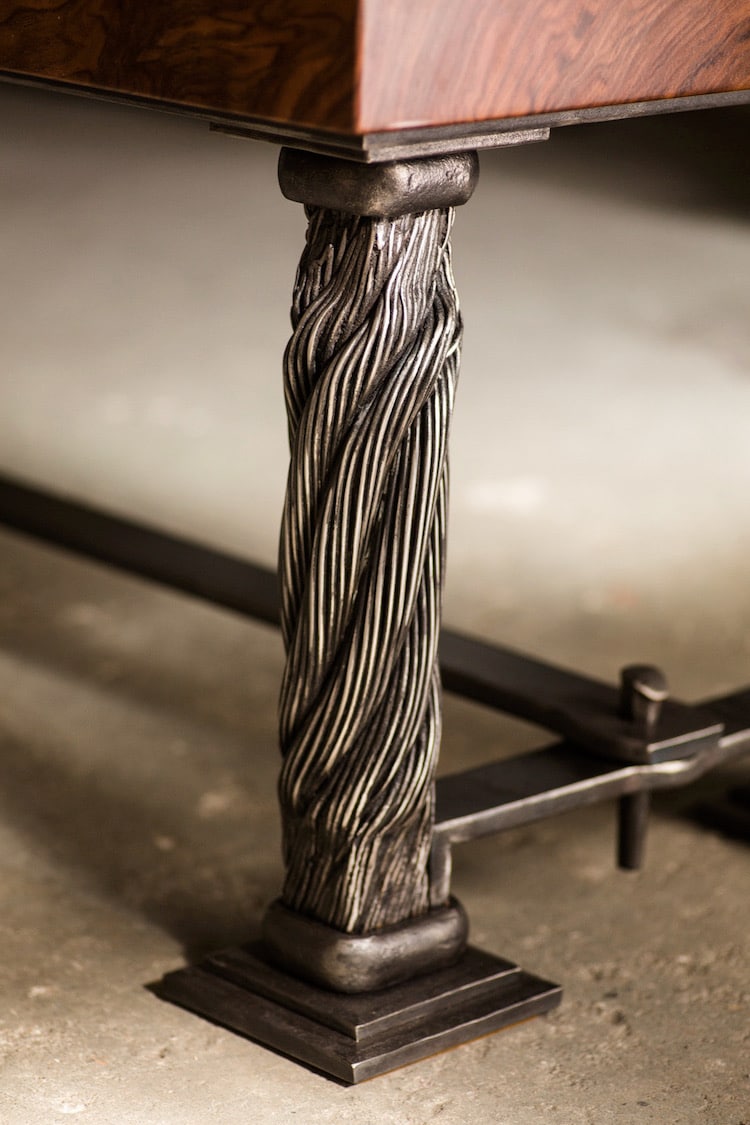
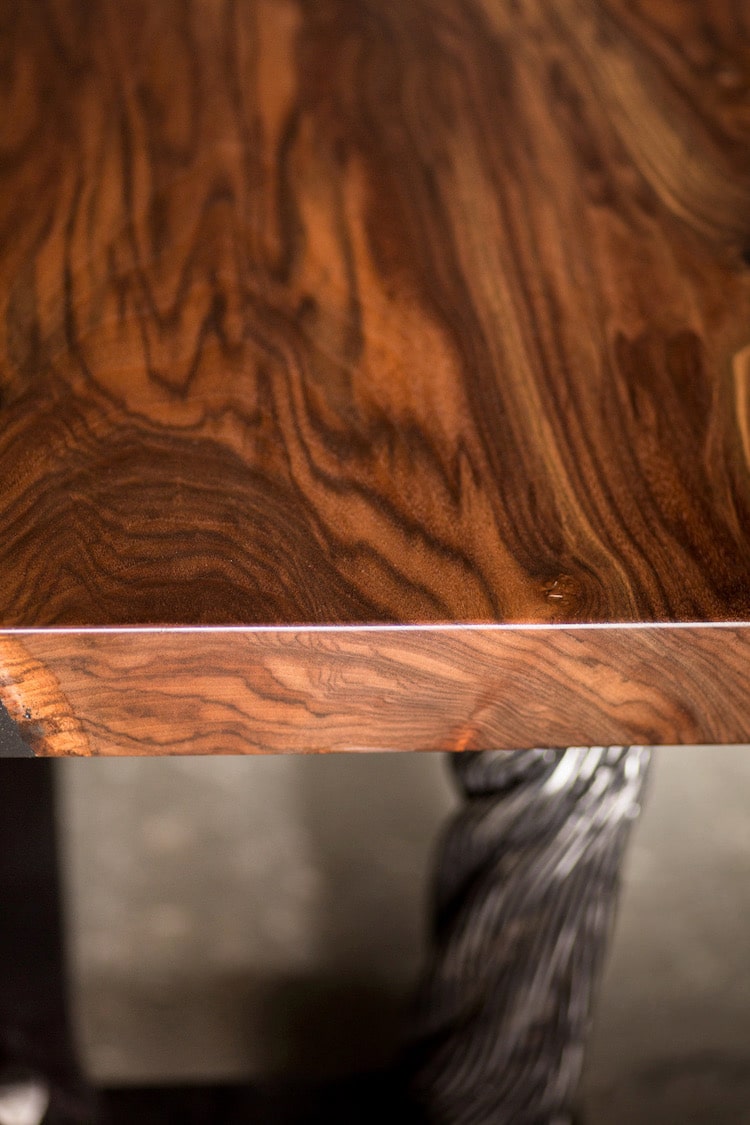
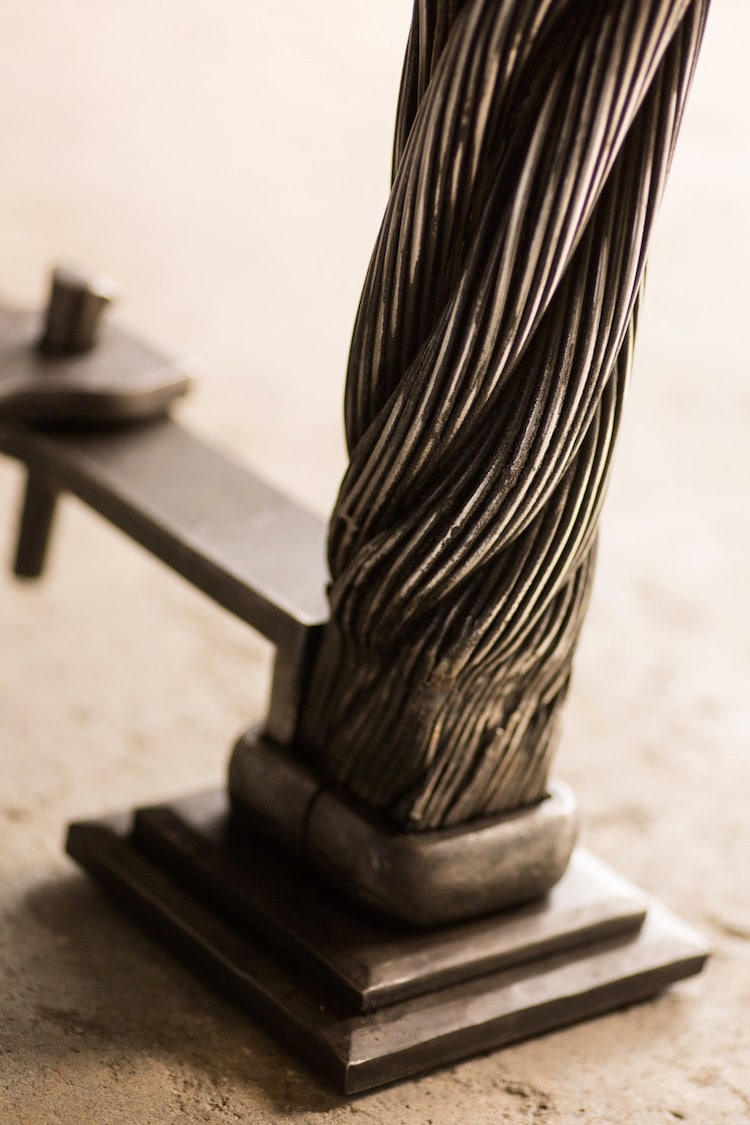
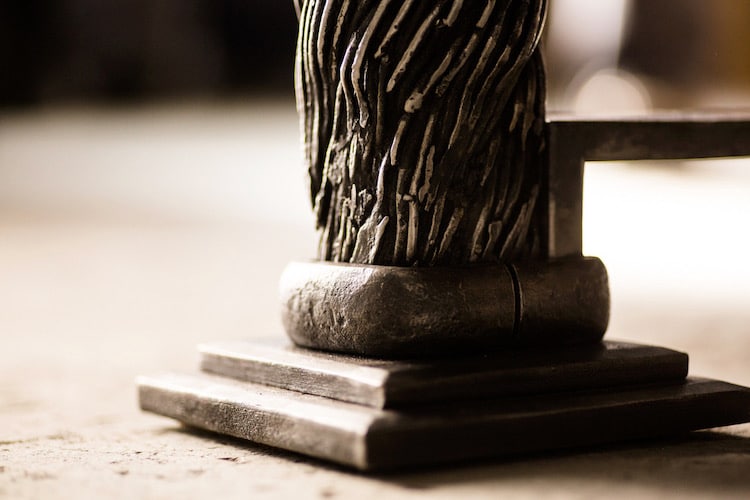
Created in 1935, each rope is made of 229 individual strands of galvanized steel.
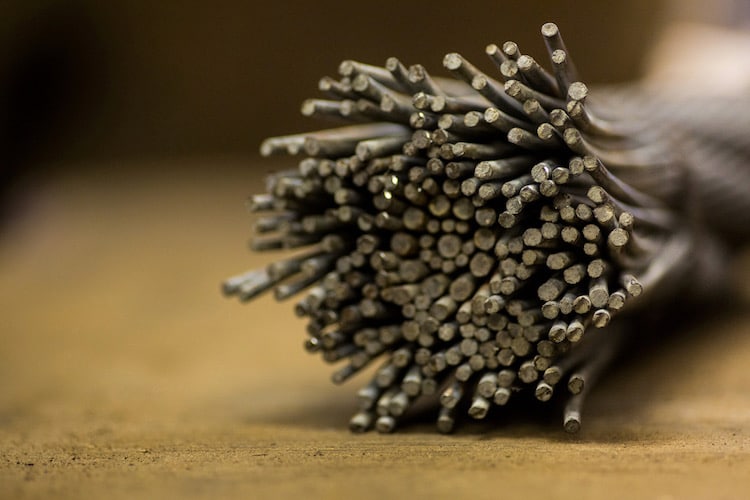
The ropes were sold off after being replaced in the 1970s.
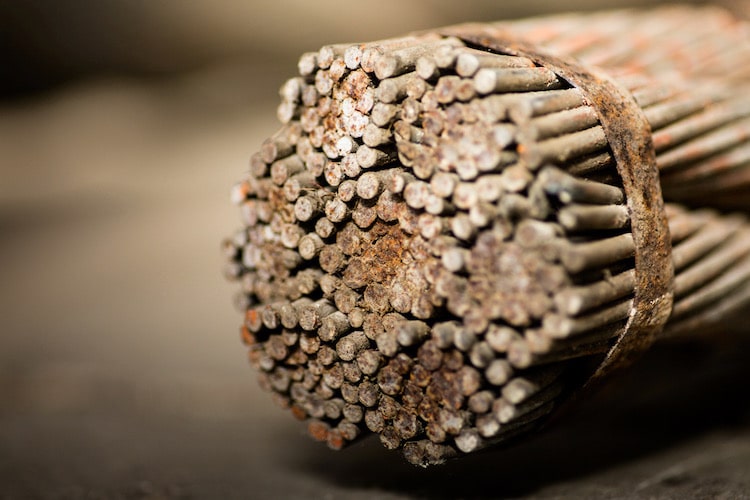
Their strength makes them difficult to work with, but Strands of History has successfully incorporated the ropes due to collaborations with local craftsmen.
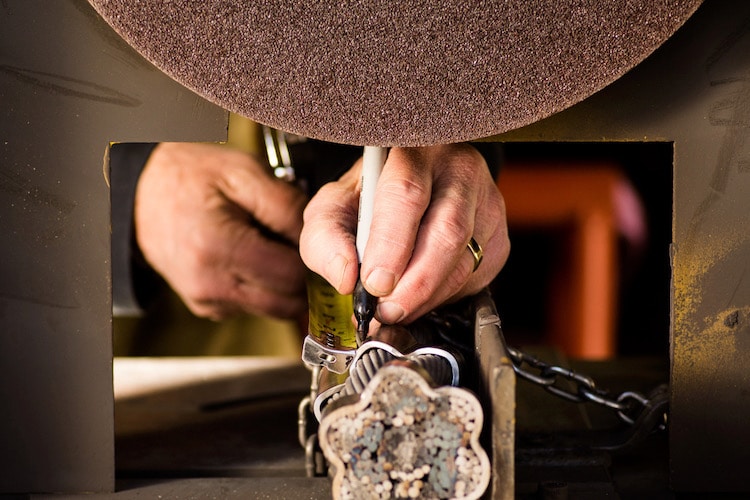
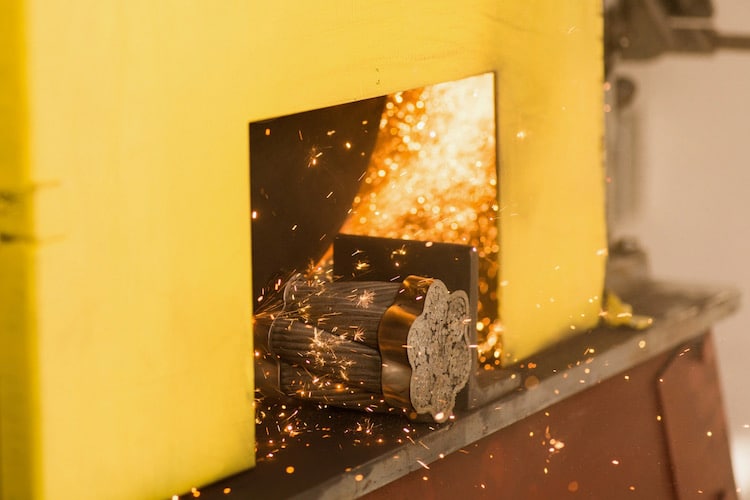
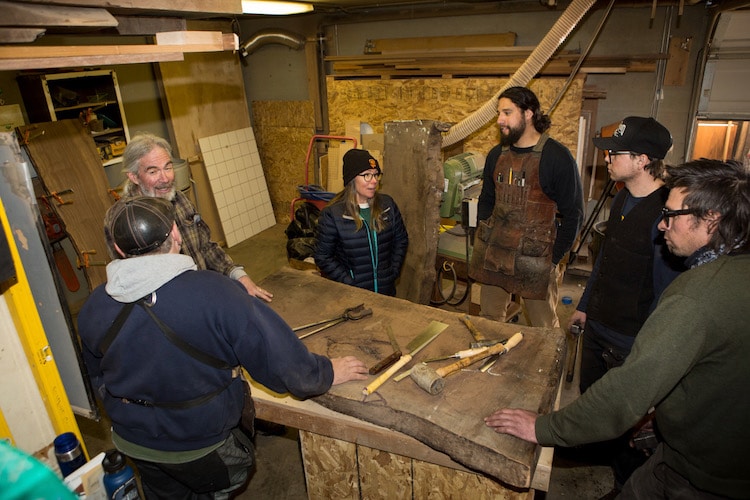
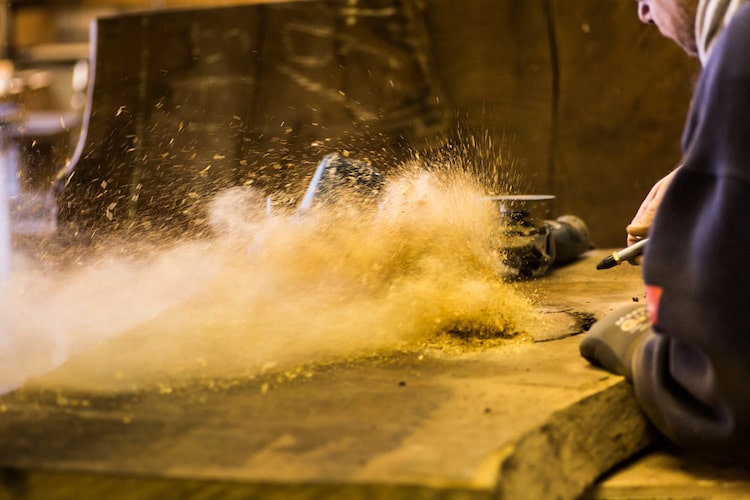
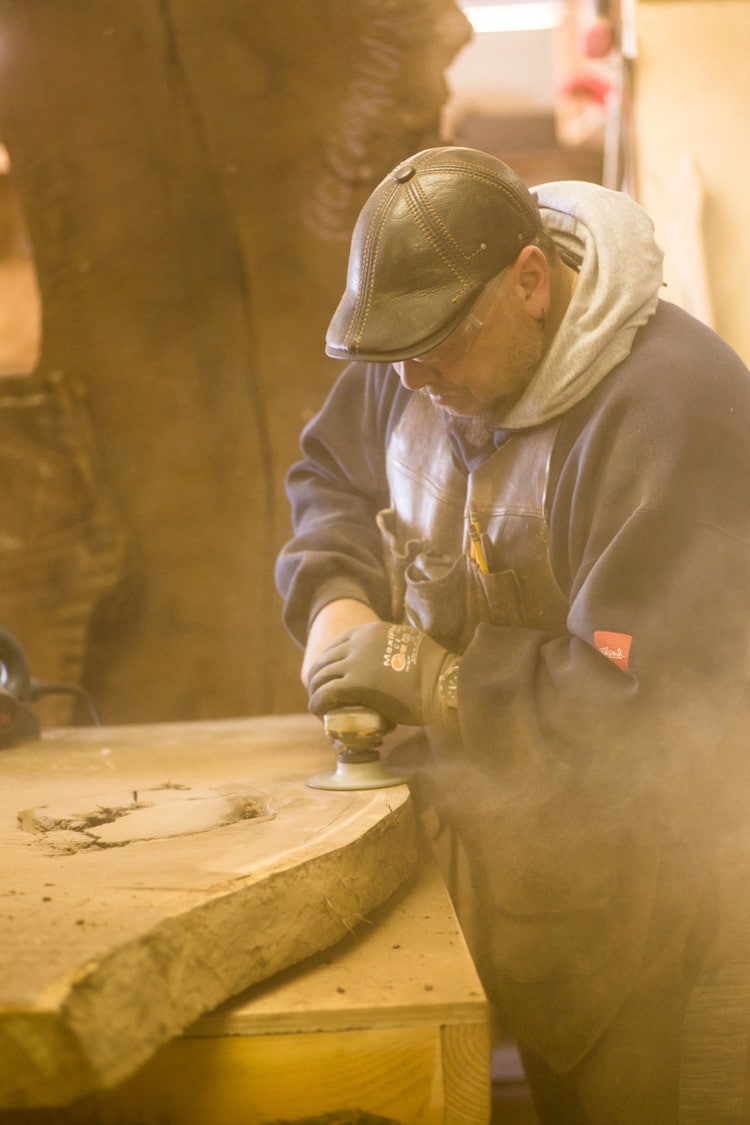
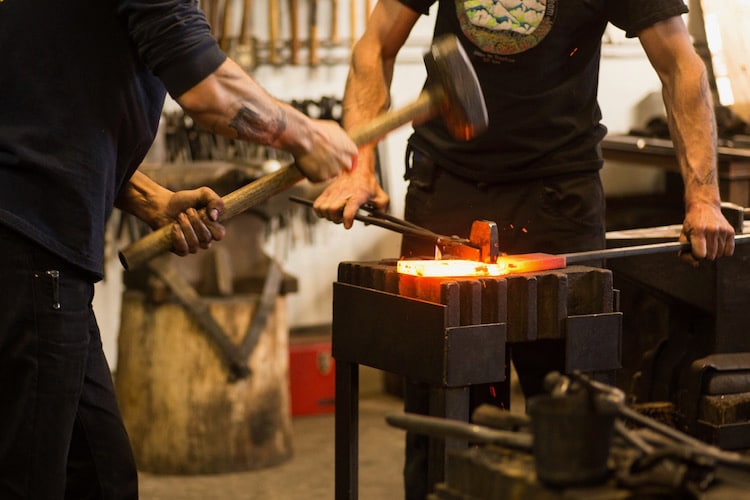
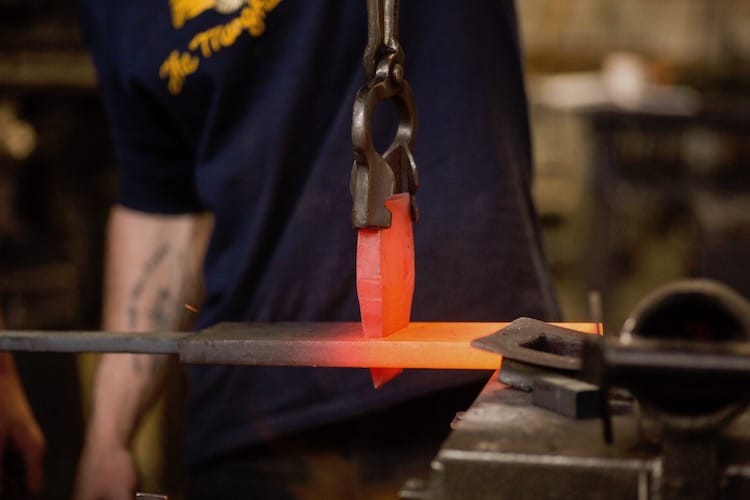
Strands of History: Website | Facebook | Instagram
All images by Danielle Hankinson. My Modern Met granted permission to use photos by Strands of History.
Related Articles:
Yves Bhar’s Golden Gate Bridge Inspired Chair (4 pics)
Wooden Table Has a Rainbow River of Melted Crayons Flowing Through It
Designer Creates Furniture Using Only Forces of Tension, No Nails Needed
Old Coach House Transformed Into Modern Home Using Materials from Demolished Office












































































